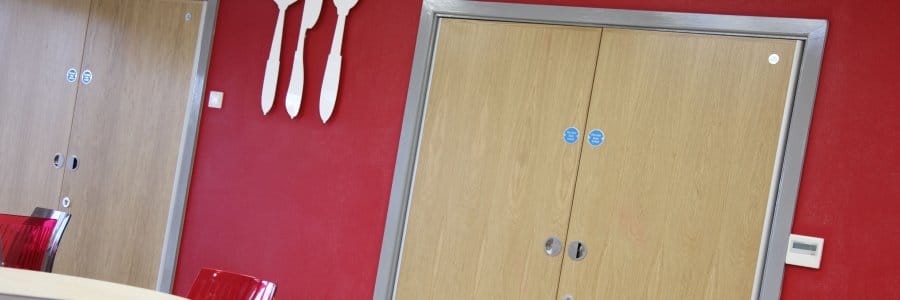Fire door ratings for Internal fire doors
On our agenda this week is an overview of the so-called “ratings” for internal fire doors i.e. for how long will they provide resistance?
Modern buildings are compartmentalised to delay the spread of fire from one area to another. The fire doors that link these compartments have two very important functions:
- when closed they form a barrier to stop the spread of fire
- when opened they provide a means of escape
Every fire door is therefore required to act as a barrier to the passage of smoke and/or fire to varying degrees depending upon its location in a building, the fire hazards associated with that building, and the function of the building (e.g. a school, library, office etc.)
Specifying the correct fire door can be a life or death responsibility – the latest figures from 2013-14 (the latest year for which comprehensive data is available) reveal the following sobering facts:
- The total number of fires attended was 212,500
- There were 322 fire-related deaths
- 41% of fire-related deaths were caused by the victim being overcome by gas, smoke or toxic fumes. The other leading causes are burns alone (20%) and combination of burns and being overcome by gas or fumes (20%)
- There were 9,748 non-fatal casualties in fires
Roughly 1 in 12 fires spread from where the fire started to other rooms in the building … this is where the fire doors come in, and this is where we need to ensure that the correct rating is fitted.
Internal Fire Door Ratings explained
Fire doors and doorsets are tested to BS 476 Part 22 to represent how they will function in a fire, and are rated in minutes and prefixed by the letters FD. Hence:
Fire door rating Fire door
30 minutes FD 30
60 minutes FD 60
90 minutes FD 90
120 minutes FD 120
240 minutes FD 240
Note that we mentioned doorsets there – the building regulations in operation relate to the entire door installation, and not just the door alone. Because of this, fire doors are not tested as individual leaves, but as a complete installation, along with frame, locks, latches and other essential ironmongery.
The tests
Tests are made on complete door assemblies: i.e. the fire door and doorframe with all the requisite hardware (e.g. locks, latches, hinges, etc). The assembly, or doorset (see above), is then fixed in a wall representing its use in practice. It is important that the actual frame to be used is tested as well as, should a door be tested in one type of frame and then used in another, no guarantee could be given of its performance under fire conditions.
The test procedure is fully described in the Standard, and consists of exposing one face of the door to the heat conditions anticipated in a fire while observing the door for stability and integrity. The Standard requires the tests to be carried out with the upper part of the door under a small positive pressure, to simulate the conditions likely to occur in a fire. It also provides an objective method of establishing the loss of integrity of a fire door by the use of a combustible fibrous pad on the unexposed side of the door to see when it ignites. As a fire door should be tested from each side to establish its performance with either face exposed to fire conditions, two specimens are required.
- Integrity failure is deemed to occur when cracks or other openings develop through which flames or hot gases can pass or when flaming occurs on the unexposed face
- Stability failure is deemed to occur when collapse of the specimen takes place
The regulations
Knowing the regulations of internal fire doors is important, and we encourage you to read them.
How to get expert advice
As we’ve so often said, it’s absolutely vital that you talk to experts who specialise in the manufacture and installation of internal fire doors – and who can give you excellent advice and guidance based on years of successful installations and a large and satisfied customer base.
If you would like further information please visit our website or use our contact page. Additionally, you can call us on 020 3199 5849 for any queries you may have.
As always we’ll be delighted to help and advise you.









